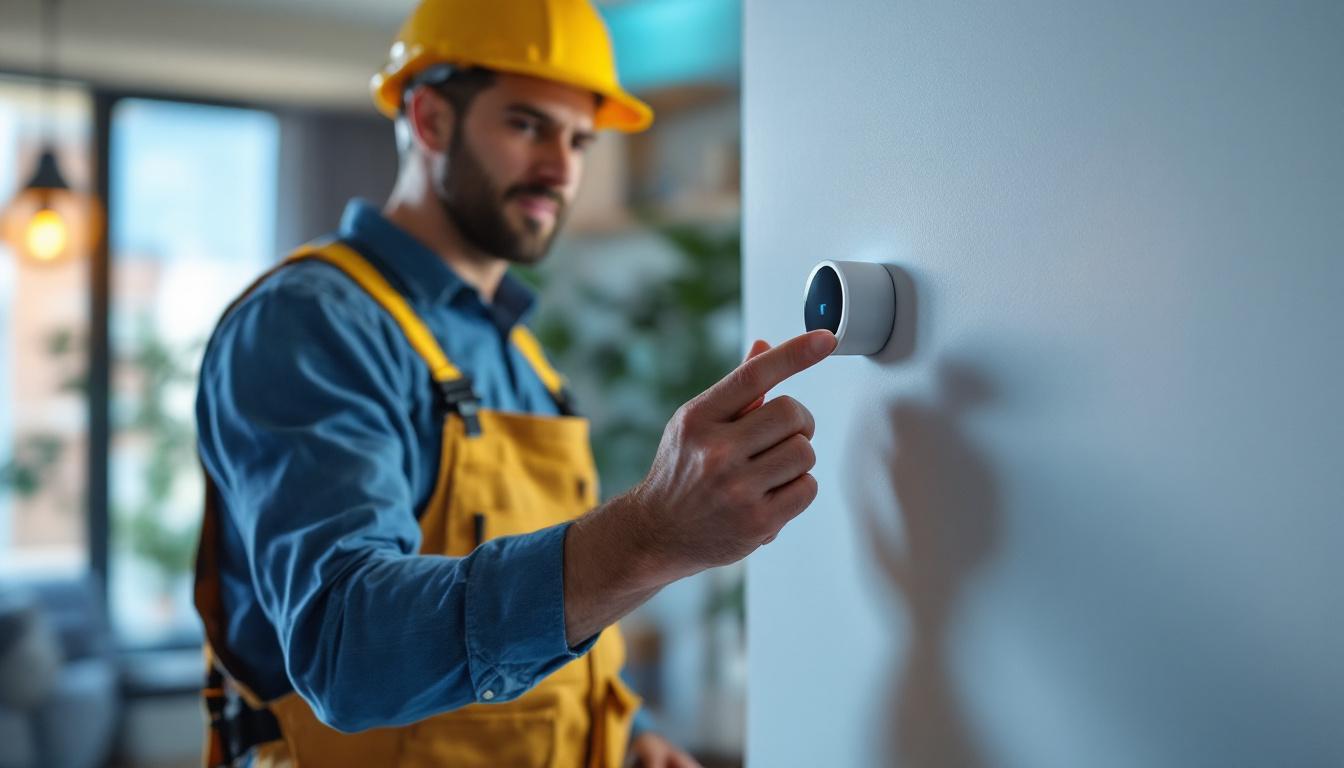Lighting plays a crucial role in the overall environment of educational institutions. Hallways, often overlooked, are essential spaces that require thoughtful lighting solutions. For lighting contractors, understanding the unique needs of school hallways can lead to improved safety, enhanced aesthetics, and better energy efficiency. This article explores the key elements that lighting contractors should consider when designing and installing hallway lighting in schools.
Hallways in schools serve as transition spaces where students, teachers, and staff move between classrooms and other facilities. Proper lighting in these areas is not just about visibility; it significantly impacts the overall atmosphere and functionality of the school environment.
One of the primary reasons for adequate hallway lighting is safety. Well-lit hallways reduce the risk of accidents, such as trips and falls, especially during busy transition periods. Furthermore, effective lighting can deter unwanted activities, contributing to a safer school environment. Lighting contractors must ensure that hallways are illuminated sufficiently to enhance visibility without creating harsh shadows or glare.
In addition to preventing accidents, proper hallway lighting plays a crucial role in enhancing security measures. Schools often face challenges related to bullying and vandalism, and well-lit areas can act as a deterrent to such behaviors. By ensuring that every corner of a hallway is visible, schools can create an environment where students feel safe and secure. Moreover, integrating surveillance cameras with adequate lighting can further enhance the monitoring of hallways, allowing for quick responses to any incidents that may occur.
Lighting can influence mood and behavior. Bright, well-designed hallway lighting can create a welcoming atmosphere, encouraging positive interactions among students and staff. Conversely, dim or flickering lights can lead to feelings of unease or anxiety. Understanding the psychological effects of light can help contractors create spaces that foster a sense of community and well-being.
Research has shown that natural light can significantly improve students’ concentration and overall mood. Schools that incorporate windows or skylights along hallways can benefit from this natural illumination, promoting a more vibrant and engaging environment. Additionally, the use of color temperature in lighting design can evoke different emotional responses; warmer tones can create a cozy atmosphere, while cooler tones can enhance alertness. By thoughtfully considering these aspects, schools can design hallways that not only serve a functional purpose but also contribute to the emotional and psychological well-being of their occupants.
With growing concerns about energy consumption and sustainability, lighting contractors must prioritize energy-efficient solutions. Utilizing LED fixtures, for example, can significantly reduce energy costs while providing high-quality illumination. Moreover, incorporating smart lighting systems that adjust based on occupancy can further enhance energy efficiency in school hallways.
In addition to LEDs, schools can explore the use of solar-powered lighting solutions for outdoor hallways, which can drastically cut down on electricity usage. Implementing motion sensors that activate lights only when someone is present can also lead to substantial energy savings. Furthermore, educating students and staff about the importance of energy conservation can foster a culture of sustainability within the school community. By engaging students in discussions about energy-efficient practices, schools can empower them to take an active role in preserving their environment, making hallway lighting not just a functional element, but a part of a larger educational initiative.
When designing hallway lighting, several factors must be taken into account to ensure optimal functionality and aesthetics. Each school may have different requirements based on its layout, size, and intended use of hallways.
The choice of fixtures is critical in hallway lighting design. Lighting contractors should consider various types of fixtures, including recessed lights, surface-mounted fixtures, and wall sconces. Each type offers unique advantages and can be selected based on the specific needs of the hallway. For instance, recessed lighting can provide a sleek, modern look, while wall sconces can add character and warmth. Additionally, energy-efficient options such as LED fixtures are becoming increasingly popular due to their longevity and lower energy consumption, making them a sustainable choice for educational institutions. The aesthetic appeal of fixtures can also be enhanced through the use of decorative elements, such as colored glass or artistic designs, which can reflect the school’s identity and values.
Even light distribution is essential in hallways to avoid dark spots that can create safety hazards. Contractors should aim for a uniform light level throughout the space, which can be achieved through careful placement of fixtures. Utilizing lighting design software can aid in visualizing light distribution and ensuring optimal placement. Moreover, the integration of motion sensors can enhance safety and energy efficiency by automatically adjusting light levels based on occupancy. This not only helps in maintaining a well-lit environment when needed but also conserves energy during off-peak hours. Furthermore, incorporating dimmable lighting options can allow for flexibility in lighting levels, accommodating different activities and times of day.
The color temperature of hallway lighting can influence the perception of space. Warmer tones (2700K-3000K) create a cozy atmosphere, while cooler tones (4000K-5000K) can enhance alertness and focus. Additionally, the Color Rendering Index (CRI) is crucial for accurately rendering colors in the environment. A CRI of 80 or above is generally recommended for educational settings to ensure that colors appear true to life. In addition to these considerations, the psychological impact of lighting cannot be overlooked. Research indicates that the right color temperature can affect mood and behavior, making it essential to choose lighting that promotes a positive and conducive learning environment. For example, cooler lighting may be more appropriate during exam periods to help students stay alert, while warmer lighting can be used during less intense times to create a more relaxed atmosphere.
Lighting contractors must be aware of various regulations and standards that govern school lighting. Compliance is essential not only for safety but also for meeting the expectations of school administrators and the community.
Each region may have specific building codes that dictate lighting levels in educational facilities. Contractors should familiarize themselves with these codes to ensure compliance during installation. Additionally, adhering to safety standards, such as those set by the Illuminating Engineering Society (IES), is crucial for providing safe and effective lighting solutions.
Incorporating accessibility into hallway lighting design is vital. This includes ensuring that lighting is sufficient for individuals with visual impairments. Contractors should consider the placement of fixtures and the use of contrasting colors to help visually impaired individuals navigate hallways safely.
As technology advances, innovative lighting solutions are becoming more prevalent in educational settings. Lighting contractors should stay informed about the latest trends and technologies to provide the best options for schools.
Smart lighting systems offer significant advantages, including energy savings and enhanced control. These systems can be programmed to adjust based on occupancy, time of day, or natural light levels. For instance, dimming lights during non-peak hours can lead to substantial energy savings. Additionally, smart systems can provide real-time data on energy usage, helping schools monitor and manage their lighting more effectively.
Incorporating daylight into hallway lighting design can reduce reliance on artificial lighting and enhance the overall aesthetic. Daylight harvesting involves using windows and skylights to maximize natural light. Contractors can design lighting systems that dim or turn off when sufficient daylight is present, creating a more sustainable and pleasant environment.
Dynamic lighting, which changes in intensity and color throughout the day, can positively impact the learning environment. For example, warmer tones can be used in the morning to create a welcoming atmosphere, while cooler tones can be utilized in the afternoon to promote alertness. This adaptability can enhance the overall experience for students and staff alike.
Once the lighting system is installed, ongoing maintenance is crucial to ensure its longevity and effectiveness. Lighting contractors should provide schools with guidelines on maintenance practices to keep the lighting systems in optimal condition.
Conducting regular inspections of hallway lighting is essential for identifying issues before they escalate. This includes checking for burnt-out bulbs, damaged fixtures, and ensuring that all lighting controls are functioning properly. Establishing a routine maintenance schedule can help schools avoid unexpected outages and maintain a safe environment.
As technology evolves, upgrading lighting systems can enhance energy efficiency and performance. Contractors should educate schools about the benefits of upgrading to newer technologies, such as LED fixtures or advanced control systems. These upgrades can lead to significant cost savings in the long run and improve the overall quality of the lighting.
Effective communication and collaboration with school administrators are essential for successful hallway lighting projects. Lighting contractors should engage with stakeholders throughout the design and installation process to ensure that their needs and preferences are met.
Each school has unique requirements based on its size, layout, and student population. Lighting contractors should take the time to understand these needs by conducting site assessments and meeting with school administrators. This collaborative approach can lead to tailored lighting solutions that enhance the overall school environment.
After installation, gathering feedback from school staff and students can provide valuable insights into the effectiveness of the lighting solutions. Contractors should encourage open communication and be willing to make adjustments based on this feedback. Continuous improvement is key to ensuring that hallway lighting remains effective and meets the evolving needs of the school.
Hallway lighting in schools is a critical element that impacts safety, aesthetics, and energy efficiency. Lighting contractors have the opportunity to master this aspect of design by focusing on the unique needs of educational environments. By considering factors such as safety, fixture selection, compliance with regulations, and innovative technologies, contractors can create effective lighting solutions that enhance the overall school experience.
As the educational landscape continues to evolve, staying informed about the latest trends and technologies will be essential for lighting contractors. By collaborating with school administrators and prioritizing maintenance, contractors can ensure that hallway lighting remains a valuable asset for schools, contributing to a safe, welcoming, and efficient learning environment.
Ready to elevate your school hallway lighting projects with the finest solutions on the market? Look no further than LumenWholesale, where we provide contractors with exceptional, spec-grade lighting products at unbeatable wholesale prices. Say goodbye to local distributor markups and hello to a vast selection of industry-standard lighting that guarantees performance and reliability. With the added benefits of free shipping and bulk buying simplicity, LumenWholesale is your go-to source for premium lighting that combines quality, affordability, and convenience. Don’t compromise on your lighting needs—choose Wholesale Lighting at the Best Value and make your next project shine.

Explore the science of retrofit LED bulbs and discover how they revolutionize lighting projects for contractors.

Discover how lighting contractors can enhance profitability by adopting energy-efficient lighting solutions.

Discover the timeless charm and modern efficiency of vintage LED lamps in this essential guide for lighting contractors.

Explore the key challenges lighting contractors face when integrating Nest movement sensors into smart lighting systems.